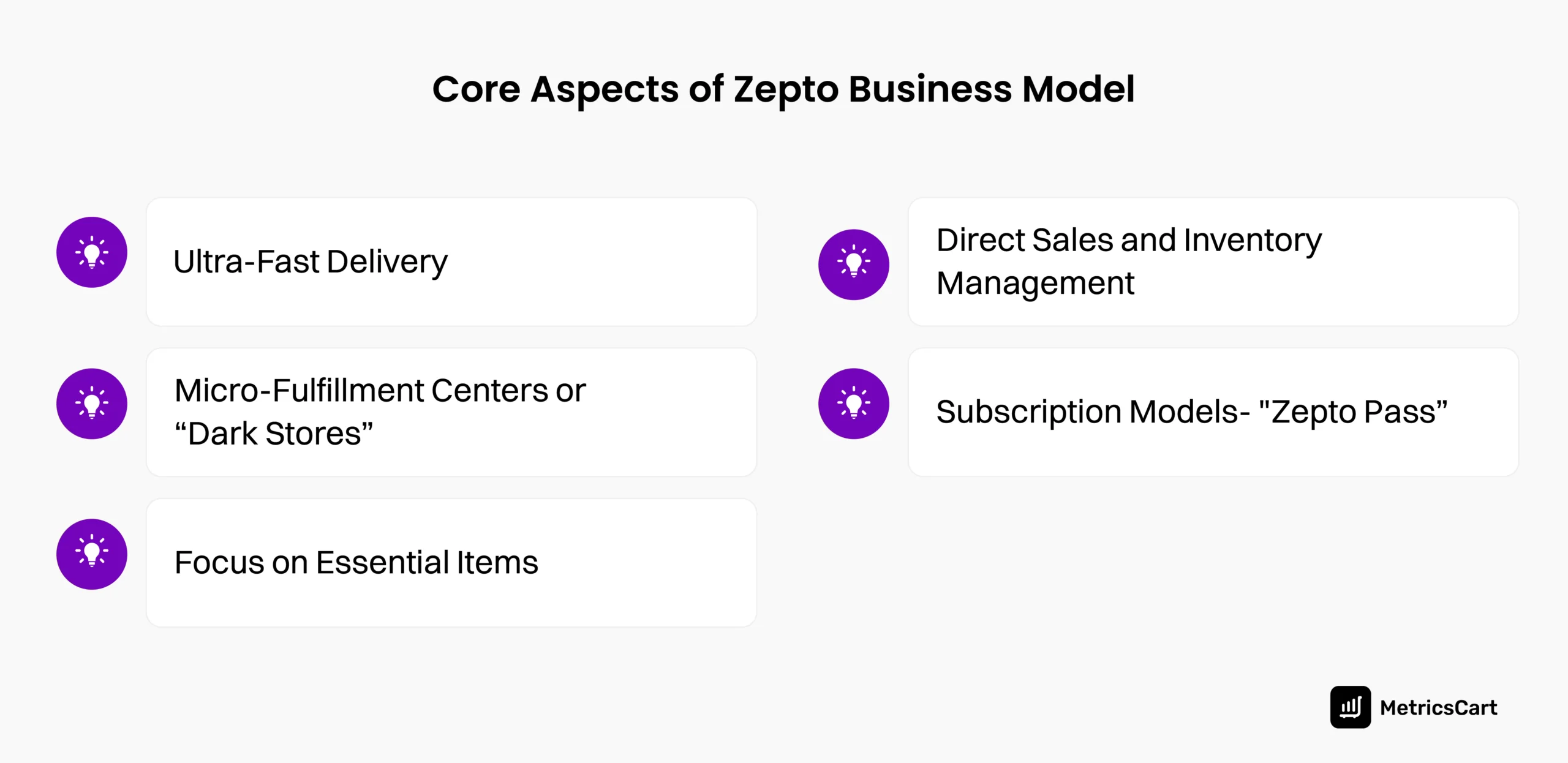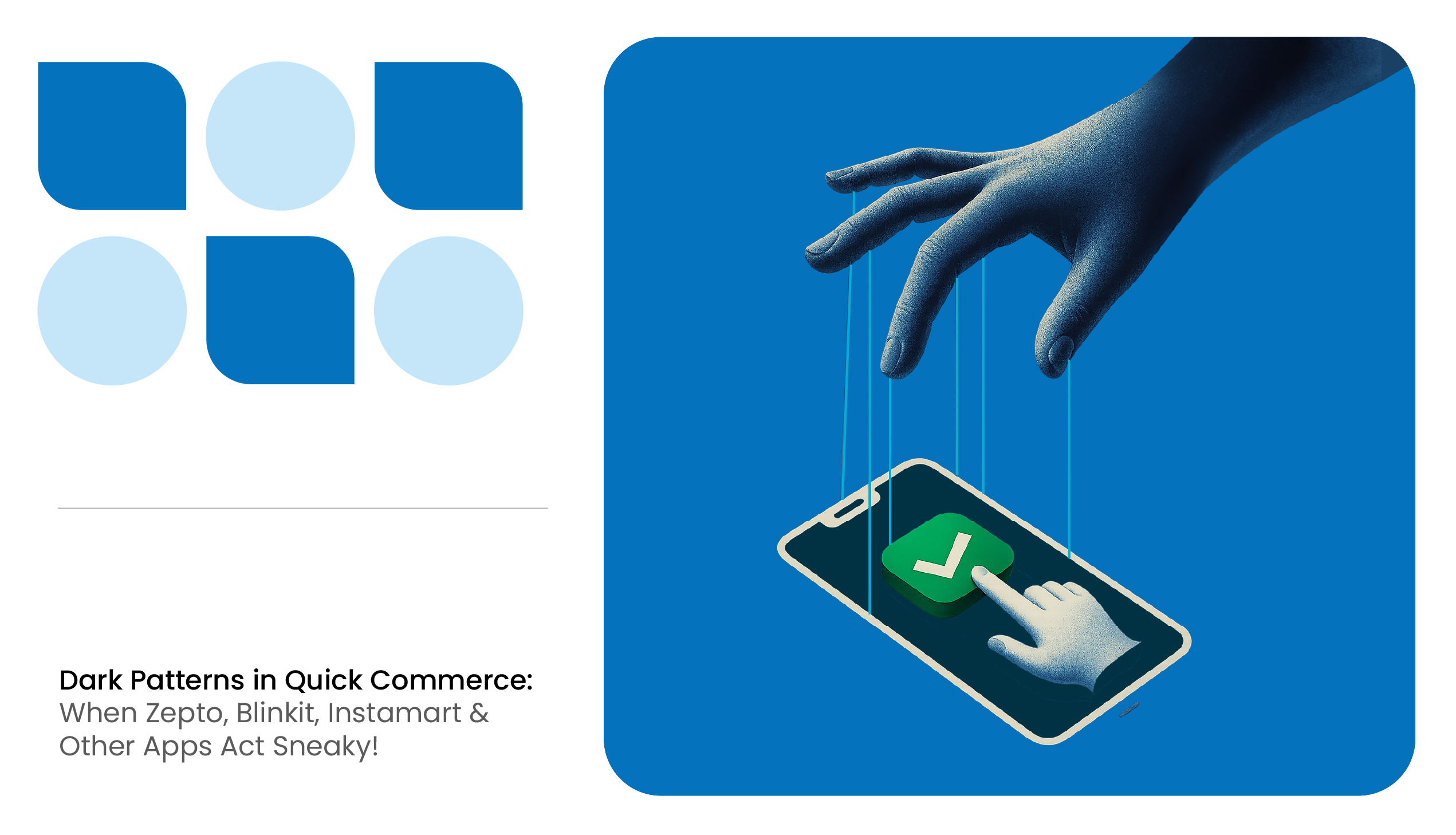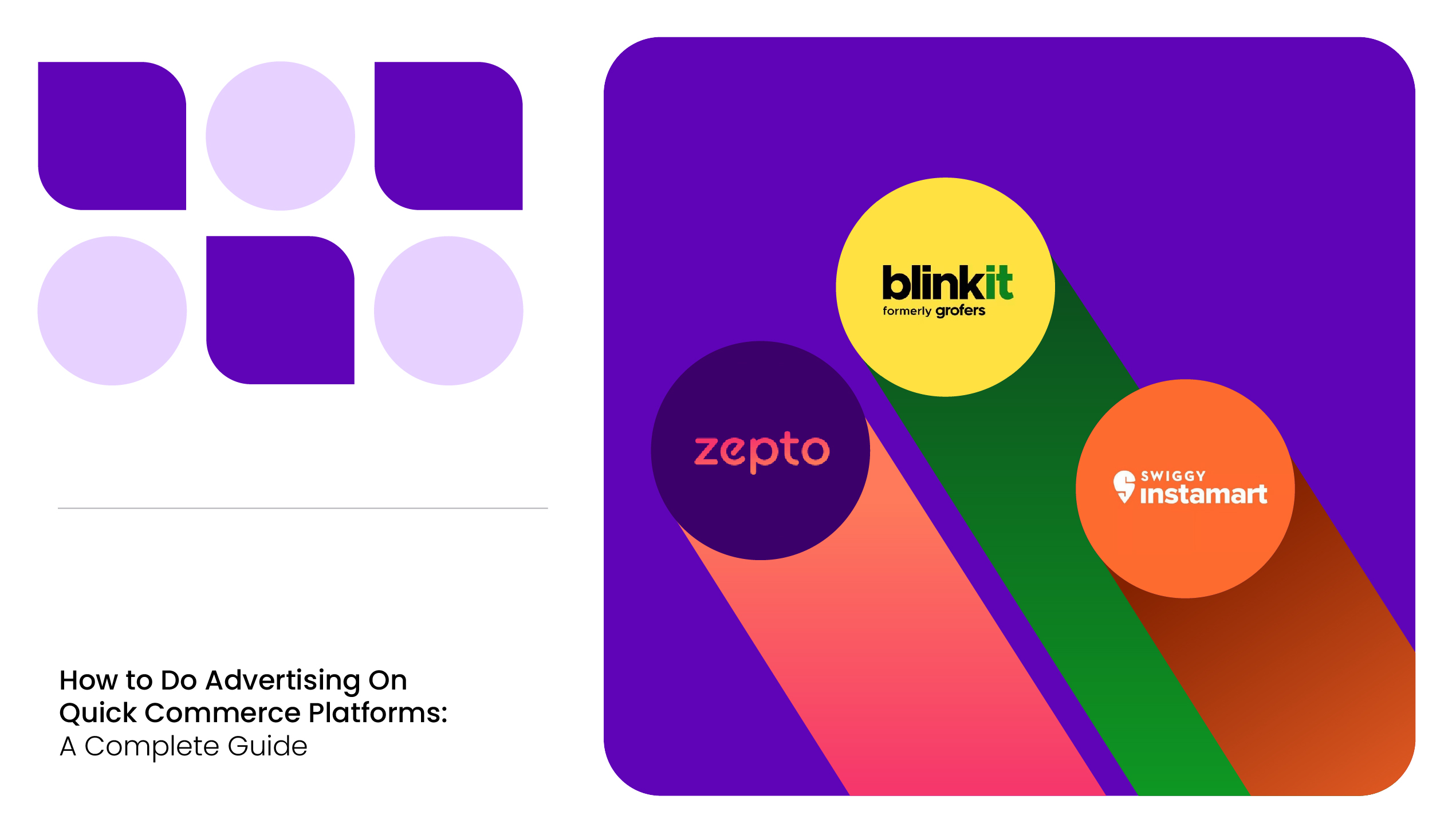In 2024, quick commerce platforms accounted for over two-thirds of all online grocery orders in India. One of the key players in this area is Zepto.
Zepto is a Mumbai-based quick commerce startup that has risen rapidly in India’s e-commerce space with its promise of ultra-fast grocery delivery. Founded in 2021 by Aadit Palicha and Kaivalya Vohra, Zepto set out to deliver daily essentials in just 10 minutes.
In a short span, Zepto became a household name in India’s metro cities, and its popularity has grown not just among customers but also among investors. By late 2024, the company’s valuation hit around $5 billion after a series of successful funding rounds.
For brands that are selling on other digital channels and are keen to move to quick commerce, the Zepto business model is a smart place to start.
Zepto Business Model: Core Aspects
From its lightning-fast delivery system to its inventory management strategies, these aspects are what set Zepto apart in the competitive quick commerce space. Let’s take a closer look at the key elements that power the Zepto business model.

Ultra-Fast Delivery
Zepto pioneered ultra-fast delivery by ensuring groceries reach customers in about 10 minutes on average. This is a dramatic improvement over traditional services that took hours or days.
Busy urban consumers value convenience and often order items they need immediately, like a missing ingredient for dinner or an essential household item. By meeting these needs almost instantly, Zepto has gained a key competitive advantage.
It relies on a hyper-local delivery network and streamlined operations. The process is straightforward: customers place an order on the Zepto app, the order is immediately routed to the nearest fulfillment center, and a delivery partner picks it up almost instantly.
In fact, most Zepto orders are delivered in under 10 minutes, with a median delivery time of 8 minutes 47 seconds. Ultra-fast delivery has been proven to drive customer satisfaction and loyalty. After experiencing a 10-minute service, users are reluctant to go back to waiting hours or drive to a store.
Micro-Fulfillment Centers or “Dark Stores”
A core pillar of the Zepto business model is its network of micro-fulfillment centers, commonly known as dark stores. It is a mini-warehouse that is not open to walk-in customers and is dedicated entirely to online order fulfillment.
They are strategically located within a short radius (usually 1.5 to 4 km) of the customer clusters they serve. This proximity makes 10-minute delivery feasible; when an order comes in, a warehouse with the item is almost guaranteed to be just minutes away.
Each dark store is optimized for speed and efficiency. Unlike a traditional supermarket aisle, these micro-fulfillment centers are designed for pickers to locate and pack items quickly. Moreover, Zepto uses advanced software to direct staff to the item locations, and inventory is arranged to minimize the time to collect an order.
By owning and operating these fulfillment nodes, Zepto ensures it controls the supply chain from shelf to door. For Zepto, being an early mover with a robust dark store network has set it apart as a quick commerce disruptor.
Focus on Essential Items
Another key aspect of the Zepto business model is its focus on essential items and a carefully curated inventory. Unlike a traditional e-commerce retailer with millions of products, Zepto keeps its product range focused on the in-demand daily goods from fresh fruits and vegetables to dairy, snacks, beverages, personal care items, and cleaning supplies.
Typically, each Zepto micro-warehouse carries around 2,500 different items (SKUs) that cover the vast majority of a household’s regular needs. This focus on essentials serves multiple purposes.
It guarantees that fast-moving products are almost always in stock and helps speed up the picking process. When there are fewer total items in a warehouse (say 3000 SKUs instead of 50,000), the layout can be compact and optimized. Pickers can quickly locate items because everything stocked is familiar and frequently picked.
Zepto’s inventory strategy centers on being the go-to store for everyday essentials. This focused approach is a win-win: customers get convenience, and Zepto gets a business model built on high-demand, fast-moving inventory that keeps operations lean.
Direct Sales and Inventory Management
Zepto’s model is often described as “inventory-led,” meaning it owns and manages the products it sells rather than just acting as a middleman.
By managing its inventory through dark stores, Zepto gains tight control over the entire value chain, from procurement to delivery. Zepto sources products directly from manufacturers, farmers, or large distributors and stocks goods in its warehouses.
This helps Zepto ensure quality, negotiate bulk prices, and maintain consistent stock levels. If an item is running low in a dark store, Zepto’s central system knows to replenish it by sending more from a supplier or a larger hub.
Moreover, handling inventory directly allows Zepto to implement strict quality control. Perishable items like fruits, vegetables, and dairy are monitored closely. If produce isn’t selling at one location, Zepto can transfer it to another nearby store where demand is higher, reducing waste.
In essence, direct sales and inventory management make Zepto’s 10-minute deliveries sustainable and reliable.
Introduction of Subscription Models- “Zepto Pass”
To complement its core delivery business, Zepto introduced a subscription-based membership program called Zepto Pass. This loyalty program offers members perks like free deliveries, exclusive discounts, and priority customer support.
According to Zepto’s announcement, the goal of Zepto Pass is to enhance the shopping experience for regular users and encourage them to use Zepto even more frequently. The subscription was initially offered at an introductory price as low as ₹39 for the first month as a trial and later priced around ₹149–299 per month, depending on the plan.
By paying this fee, customers can waive delivery charges on all orders above a minimal amount. Often, orders over ₹99 qualify for free delivery with Pass. They also receive additional cashback or discounts on certain products and partner offers.
A subscription model helps increase customer retention. Once someone has paid for a month of benefits, they are more likely to consolidate their grocery shopping on that platform to make the most of their subscription.
For Zepto, this means more consistent order volume and higher customer lifetime value. It also provides a steady revenue stream from subscription fees, which can offset thin margins in the delivery business.
How can MetricsCart’s Quick Commerce Intelligence Tools Support Zepto’s Success?
Running a quick commerce business like Zepto’s involves many moving parts – inventory has to be in the right place, prices need to be competitive yet profitable, products must be visible to shoppers, and customer feedback should be monitored to keep improving the service. This is where advanced analytics and intelligence tools such as MetricsCart’s Quick Commerce Intelligence suite can help companies like Zepto optimize their operations in real time.
Inventory Management
One of the biggest challenges in quick commerce is avoiding stockouts and excess inventory. MetricsCart’s tools can help track inventory levels and sales velocity across all dark stores. By analyzing which items are selling fastest and which locations are running low, the system can alert Zepto’s team to reorder or redistribute products proactively.
Price Optimization
Zepto needs to price products attractively for customers while maintaining healthy margins. MetricsCart monitors competitors’ and market prices in real time to provide price analysis.
For instance, if a rival platform or local store is offering a discount on a popular product like rice or cooking oil, MetricsCart can detect that and alert Zepto to adjust its price or run a promotion in response. This kind of dynamic pricing intelligence ensures Zepto remains competitive and doesn’t lose customers over price differences.

Conclusion: The Future of Zepto and Quick Commerce
Zepto’s growth shows that quick commerce isn’t just a delivery play; it’s a consumer behavior shift. Customers are increasingly choosing 10-minute delivery apps over traditional marketplaces or e-grocery platforms. For brands already active on Amazon, Flipkart, or e-commerce platforms, the question now isn’t if they’ll enter quick commerce- it’s how.
But quick commerce comes with a unique set of challenges: real-time inventory management, dynamic pricing, hyper-local product assortments, and instant feedback loops.
That’s where MetricsCart Quick Commerce Intelligence comes in.
We help brands bring operational clarity to a fast-moving channel so their bestsellers stay in stock, their pricing stays competitive, and their visibility isn’t left to chance.
Drive Faster Growth with Smarter Quick Commerce Intelligence.
FAQs
The Zepto business model is a quick commerce model centered on ultra-fast delivery of groceries and essentials. Zepto operates its network of dark stores in local neighborhoods and stocks them with high-demand items. This ensures speed and reliability in its service, making money by selling products directly and leveraging efficiency to keep costs low.
Zepto is able to deliver so quickly by using a hyper-local delivery model. It strategically places its dark store warehouses in each service area, usually just 1–2 kilometers from customers. Since the distance is short and the preparation is super fast, most deliveries are completed in around 10 minutes.
Zepto operates micro-fulfillment centers, or dark stores, strategically located to optimize delivery times and inventory control.
Zepto provides a wide range of products, including fresh produce, daily essentials, and ready-to-eat meals, catering to diverse consumer needs.
The “Zepto Pass” is a membership program offering benefits like free deliveries, exclusive discounts, and early access to promotions, enhancing customer loyalty.







